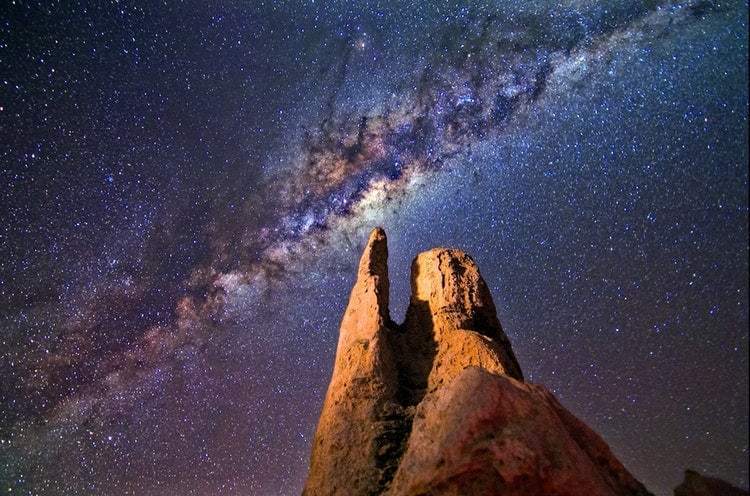The Different Branches of Astronomy
Read Time: 5 minutes
Everyone looks up at the sky at one time or another and many wonder what’s out there. Humans are inherently curious. Yet, it becomes difficult for us to understand things that we can’t see, taste or touch. That’s where astronomy comes in. In general, astronomy is the study of things that exist outside of our atmosphere, but that doesn’t cover all the bases. Let’s take a look at the different branches of astronomy, and the amazing scientists that have helped us to understand our universe a little bit better.
Try Adsterra Earnings, it’s 100% Authentic to make money more and more.



What Will Scientists Discover Next?
Science news delivered weekly!
Planetary Astronomy
First, let’s focus on things that are closer to home — cosmically speaking, that is. Planetary astronomy is the study of planets and planetary bodies, including things like moons, comets and asteroids. Astronomers in this field study our home solar system as well as planetary bodies that are further from home. Scientists search the skies for exoplanets. They use tools like the Kepler telescope on Earth and the TESS space telescope in orbit.
You probably know of at least one famous planetary astronomer — Galileo Galilei, who is sometimes called the Father of Observational Astronomy. He was the first astronomer to discover moons orbiting around other plants — in his case, four of the moons of Jupiter. Today, the title belongs to the likes of George Ricker, who is the principal investigator for the TESS space telescope and his team.
Becoming a planetary astronomer isn’t easy, but it’s one of the most popular fields right now, so if you want to get in on the ground floor of some amazing discoveries, this is the field for you.
Solar Astronomy
Solar astronomy is the study of the sun — but not just any sun. This branch of astronomy focuses specifically on the yellow star in the center of our solar system. Scientists in this branch focus on our home star, how it changes and how it affects us here on Earth. This field is another one that uses both ground-based instruments and ones that are in orbit around our planet.
One exciting development in solar astronomy happened earlier this year, with the launch of the Parker Solar Probe. This specially designed probe will, in theory, be able to dive closer to the sun’s surface than ever before. It will collect data about the solar winds and radiation that the yellow star produces. Once it reaches its target orbit, though, we won’t hear from it for probably two years. Why? The magnetic interference the sun produces naturally makes it difficult to send data back home.
Nicolaus Copernicus, the first solar astronomer, first suggested the heliocentric theory. It states that the Earth revolves around the sun rather than the Earth being the center of the universe. Today’s most popular solar astronomers developed the Parker Solar Probe. Now we all wait impatiently to hear whether the craft will survive its dive into the sun’s corona.
Stellar Astronomy
If you’ve ever looked up at the sky at night, you’ve probably seen plenty of stars. Stellar astronomy is the study of those stars. Stellar astronomers aren’t just looking at the stars. They study them to figure out how they’re born, how they evolve over their extremely long lifespans and what happens when they die.
One of the earliest stellar astronomers was born in 1863. During her life, Annie Jump Cannon developed the Stellar Classification system, the basis for the system we still use today. It enables us to classify stars by the temperatures that they produce, their size and their color. Our own yellow star is a class G that generates temperatures between 5,200 and 6,000 K.
The recently discovered galaxy, COSMOS-AzTEC-1, is a boon for stellar astronomers. This unstable galaxy forms stars 100 times faster than our own Milky Way Galaxy. By watching it, astronomers get to see the entire life cycle of a star in close to real time. And that leads perfectly into our next branch of astronomy.
Galactic Cosmology
While we might not think of it often, our home planet is inside a galaxy spinning around a supermassive black hole. Astronomers who study galactic cosmology, or galactic astronomy, focus on the motion and evolution of the Milky Way. This field of study gives us a better understanding about how galaxies form.
This information won’t just help us understand our own galaxy. Once we understand how the Milky Way formed, we’ll have a better idea of how other galaxies — especially other spiral galaxies — have formed and will continue to form in the future.
Henrietta Swan Leavitt is considered one of the first galactic astronomers. She was working as a human computer at Harvard when she discovered the Cepheid variable — the brightness of a pulsar, though she didn’t have the name for it at the time — which enabled astronomers of the time to calculate everything from interstellar distance to the size of the Milky Way.
Other Branches of Astronomy
Everything else that doesn’t fall under those four branches of astronomy is often just classified as astronomy, but there are a lot of different fields here.
There’s astrophysics, which is the study of the laws of physics as they apply to interstellar phenomena. Then there’s cosmogony, the study of the Big Bang and the origins of the universe. We even have astrochemistry, the study of chemistry in outer space. Astrochemists are the ones responsible for telling us that the black hole in the center of our galaxy smells like raspberries and rum, not because they stuck their head out and smelled the space, but because they’re able to analyze the chemical makeup of dust clouds in the area.
It’s important to note that we do not recommend sticking your head out of an airlock to see what space smells like.
The Future of Astronomy
With everything that we’re discovering today, what branches of astronomy can we expect to see develop in the future?
Once we start traveling between planetary systems, stellar cartography will become a necessity — learning to plot and navigate safe paths through outer space. It might be science fiction today, but it will become a valuable skill once we manage to make it out of our own solar system.
Planetary assessments will also likely become a branch of astronomy. Safety and habitability will be important once we can travel to other planets. It will be up to the astronomers and other scientists to assess our likelihood of survival on the planet’s surface.
Astronomy is a massively competitive field, but it’s on the cutting edge of some of the most exciting discoveries of our age. If you’ve ever really wondered what’s out there in the black, consider a career in astronomy, and find out firsthand.
Read about more astronomy topics and discoveries here!


More Story on Source:
*here*
The Different Branches of Astronomy
Published By

Latest entries
 allPost2024.11.22Bezpłatny Bonus Bez Depozytu w całej Rodzimych Kasynach Internetowego 2024
allPost2024.11.22Bezpłatny Bonus Bez Depozytu w całej Rodzimych Kasynach Internetowego 2024 allPost2024.11.22Odbierz Wyszukane Bonusy W celu Polaków!
allPost2024.11.22Odbierz Wyszukane Bonusy W celu Polaków! allPost2024.11.22Trump taps former Florida AG Pam Bondi for attorney general
allPost2024.11.22Trump taps former Florida AG Pam Bondi for attorney general allPost2024.11.22Visiter Pompéi de dix moment : Nouvelle et Avance avec 2024
allPost2024.11.22Visiter Pompéi de dix moment : Nouvelle et Avance avec 2024



